One frosty autumn day Howard Pyle (1853-1911) brought his illustration students outdoors to find some wild hickory nuts. After they had gathered up the fallen harvest from alongside the banks of a millstream, they noticed many more nuts resting on the stream bottom. “Well boys, there is only one way to get them,” one of his students, Frank Schoonover, recalled him saying.[1] Pyle removed his shoes and stockings and rolled up the sleeves of his sweater. He waded into the icy water, plunging his arms down to the streambed to gather the remainder. Pyle did not allow the moment to pass without a lesson. “The poor soldiers at Valley Forge felt the cold, just as we feel the cold now,” he said. “The ragged lot that marched against the Hessians at Trenton felt the icy water and the numbing cold and I don’t believe it’s possible to paint a picture of that sort within the four walls of your studio unless you feel the cold even as they did.”[2]
Fig. 1. Howard Pyle, Washington and Steuben at Valley Forge, 1896
In Pyle’s illustration Washington and Steuben at Valley Forge, the two leaders trudge through the snowy camp, as the soldiers give a desultory salute. The composition alternates dense clusters of figures with stark, empty expanses of snow and sky. The cold wind flutters a flag and tugs at the hem of Washington’s cloak.
One of Pyle’s chief attributes as an artist was this quality of “mental projection,” the ability to envision unseen worlds through the lens of direct experience.[3] In Pyle’s way of seeing, every object stands as a token for something unseen. A seashell, for example, derives its beauty not only from its iridescence and its curving form but also because it stirs the imagination to contemplate distant, palm-fringed shores. “It is not the mere outward part—the part the eye sees— that holds the interest,” Pyle remarked, “but what the soul feels.”[4] This principle was woven through every aspect of his picture-making process: the preliminary sketch, the compositional design, the dramatic staging, and the use of models.
Although Pyle did not leave behind a systematic theory or method in his own writings, many of his students kept copious notes of his spoken words. Thornton Oakley recalled: “During three years with him he did not mention a word about materials, methods, mediums, or techniques.”[5] Too much emphasis on technique, Pyle warned, would result in a kind of mannered overindulgence, where the means become more important than the message.
Preliminary Sketches
Nevertheless, Pyle’s picture-making process can be documented both from his teaching and from his surviving preliminary works. When an idea for a picture began to germinate in his imagination, he made many thumbnail sketches in pen or pencil before he settled on the final design.
Fig. 2. Howard Pyle, Preliminary sketchs for The Coming of Lancaster, 1908
The sketches for The Coming of Lancaster show several tentative explorations of the subject in pencil. In each of the sketches the horse and rider emerge from what appears to be an almost random doodle, with loose lines moving in and out of the form. The positions of the heads are established as knotlike circles drawn more darkly, as if Pyle recognized that they would attract the most attention. Student Charles DeFeo recalled seeing a desk drawer filled with thousands of such sketches, as many as fifty for a single picture. “If the first sketch looks like the one I want to do,” said Pyle, “to make sure—I always make the other forty-nine anyway.”[6]
Sometimes the process of generating thumbnail sketches acquired an almost mystical intensity.
Pyle once described the feeling of an unseen hand guiding his own.[7] His sketches give the impression of a fleeting vision snatched from the ether, a snapshot from the swirling creative vortex, or a half-remembered dream. Another student, Harvey Dunn, who himself later became an influential teacher, characterized this stage as the formation of the “pictorial concept,” with the emphasis on defining the emotional or spiritual force behind the image and expressing it very simply, often devoid of detail.[8]
Pyle liked to think of picture ideas in elemental terms. When critiquing a railroad subject by one of his students, he advised imagining the train’s engine as a monster, “a thing formed of the metals of the earth—moved by fire and water.”[9] It was vital that the picture express a single idea. A second idea, he told his students, weakens the picture by half, and a third by a compound ratio.[10]
Principles of Composition
Pyle’s compositions are so arresting and original that it is tempting to analyze his images purely in abstract terms: contour, shape, thrust, asymmetry, and so on. Although his paintings are notable for their aesthetic appeal, they were not conceived with design alone in mind. To Pyle, art did not exist for its own sake but rather for the sake of the story. The expression of an emotion or an idea was paramount. Pyle’s student Jessie Willcox Smith recalled how one’s awareness of the story influenced the choices in composition:
At the [Pennsylvania] Academy [of the Fine Arts] we had to think about compositions as an abstract thing, whether we needed a spot here or a break over there to balance, and there was nothing to get hold of. With Mr. Pyle it was absolutely changed. There was your story, and you knew your characters, and you imagined what they were doing, and in consequence you were bound to get the right composition because you lived these things. . . . It was simply that he was always mentally projected into his subject.[11]
On a regular basis, usually once or twice a week, each of his students submitted a large outline drawing in charcoal. It was supposed to be made without models on a theme that each person came up with independently. Pyle reviewed the submissions and chose the ones he wanted to talk about.[12] It is the students’ notes on these critique sessions that give us an indication of Pyle’s thinking about composition.
It was essential to keep the picture simple in tone. “The fewer tones the simpler and better your pictures,” Pyle said.[13] Sometimes he unified shapes by connecting them with an enveloping shadow; sometimes the light areas spilled over into one another. Pyle recommended lightening the light areas and darkening the dark areas, so that the lights and darks were distinct and merged to make larger tonal shapes.[14] By deliberately placing two shapes of similar value adjacent to each other, the shapes formed a larger unit. “Put your white against white, middle tones (groups) against grays, black against black, then black and white where you want your center of interest,” Pyle advised. “This sounds simple, but is difficult to do.”[15]
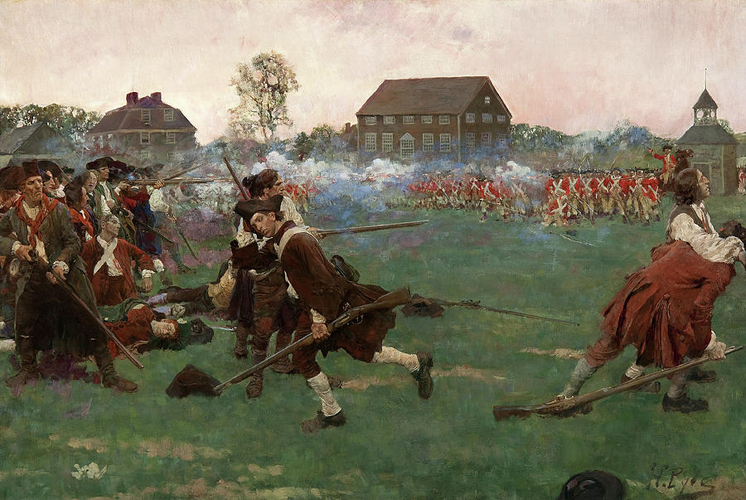
Fig. 3. Howard Pyle, The Fight on Lexington Common, April 19, 1775, 1898
In the case of The Fight on Lexington Common, April 19, 1775, for example, the white crossbelt over the shoulder of the running minuteman blends into the white sleeve of the figure behind him, while his brown breeches and coat form a larger unit with the legs of the figures behind. To concentrate attention on the face of the running figure, Pyle sharply contrasted the black tricorn hat atop the figure’s head with the white shirt behind it. The head becomes even more of a focal point because of the way the lines of two musket barrels radiate from that point of the picture.
This careful arrangement benefits the storytelling in two ways. First, it directs the viewer’s attention to the narrative focus of the picture without the distraction of trivial details. And, second, it allows the picture to be read from quite a distance, even if reproduced at a small size. Pyle recommended establishing the tonal structure of the picture immediately in the painting process: “After the first half-hour of work,” he said, “your lay-in should kill at a hundred yards.”[16]

Fig. 4. Howard Pyle, Extorting Tribute from the Citizens, 1905
The Lexington illustration demonstrates another design strategy. Pyle arranged the group of soldiers on the left into a dense cluster, with detail layered upon detail, while leaving large areas of the ground and the sky open. This clustering principle, which Pyle called “the elaboration of groups,” can also be seen in Extorting Tribute from the Citizens.[17] In front of the arch, a crowd of faces contrasts with the blank walls nearby.
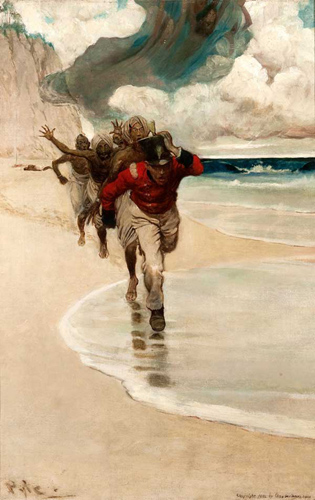
Fig. 5. Howard Pyle, We Started to Run Back to the Raft for Our Lives, 1902
In We Started to Run Back to the Raft for Our Lives, Pyle could have spaced his figures out evenly, with each silhouette separate from the others. Because he clustered them together, however, the eye sees them as one shape first and then sorts them out.
Pyle ruthlessly removed any element in a picture that was not essential to conveying the story. “They will never shoot you for what you leave out of a picture,” he once said.[18] His reductive instinct sometimes gnawed for years on a picture until it stripped the idea to the bone. The full-color oil painting Marooned, for example, was preceded by a black-and-white composition in oil, which Pyle had created to illustrate his own pirate story. As the visual idea matured in his mind, he took away the gun, made both the near waves and the far sea smaller, and reduced the size of the hat, the sash, and, most importantly, the figure itself. “He teaches the necessity of elimination,” said a student. “That is, after a composition is once created the eliminations are more important than the additions.”[19] The power of subtraction echoed through Pyle’s student N.C. Wyeth to his son Andrew Wyeth, who expressed the belief that an element removed from a picture still remains as a phantom presence.[20]
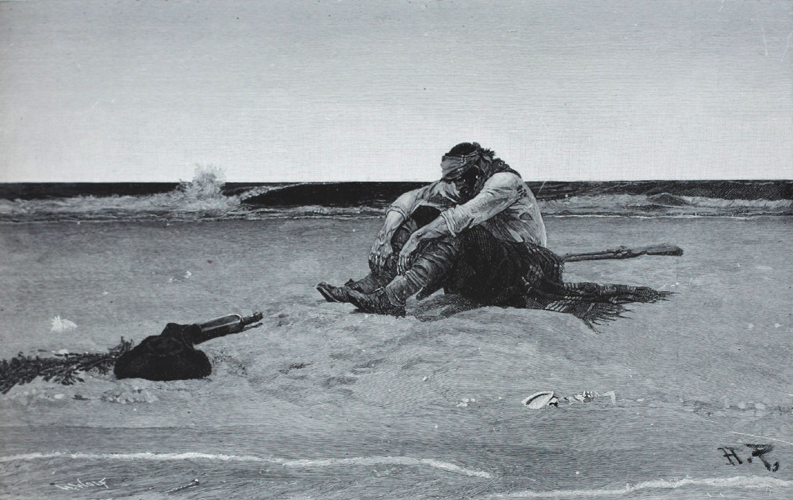
Fig. 6. Howard Pyle, Study for Marooned, 1887
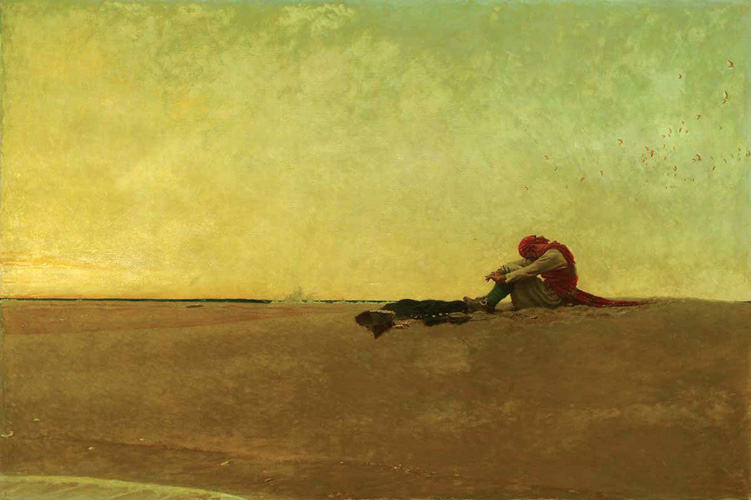
Fig. 7. Howard Pyle, Marooned, 1909
By grouping, clustering, and eliminating elements, Pyle pushed every picture toward extremes. “If you’re painting a sky full of birds, or a garden of flowers, or any objects—show one or a thousand,” he urged his students. “If an object in the foreground of your picture looks too big, make it bigger. If it looks too small, make it smaller.”[21]
Dramatic Staging
Pyle regarded the picture as a stage, and figures as actors in a drama. He believed that the faces of the principle actors should be turned toward the audience, as in theater, because “dramatic Art is nearest akin to our art.”[22] In his pictures Pyle often kept the foreground relatively empty to focus attention on the central subject.
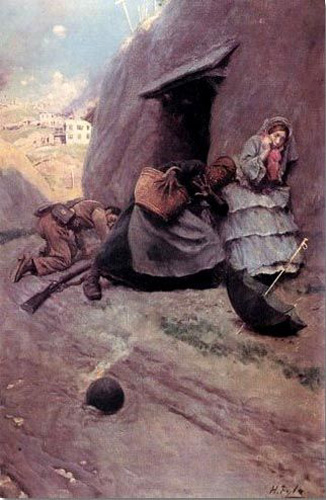
Fig. 8. Howard Pyle, The Shell, 1908
In every story he looked for what he called the “supreme moment,” the phase of action that conveys the most suspense, often a fateful encounter or a moment of decision.[23] In the composition Walking the Plank (1887), the hapless prisoner faces his doom, while his captors watch mercilessly. When scenes of extreme action were called for, Pyle often chose to portray a moment just before or just after the peak of the action, believing that putting figures amid violent action is less dramatic.[24] Similarly, in The Shell, illustrating a Civil War story, we hold our breath with dread anticipation of the impending explosion. The figures are arranged in a trapezoidal shape. Their reactions form a visual crescendo: the man has dropped to his hands and knees, and the African American woman leans to the side in an attempt to protect the cowering white woman, who has dropped her parasol. They are all frozen in horror at what is about to happen.
Every moment depicted in an illustration by Pyle is plucked from a broader timeline of dramatic events. Pyle was always conscious of what came before and what came after the moment he portrayed. He left a series of clues in Dead Men Tell No Tales (1899), which suggest the previous incidents leading to the dramatic cliff-hanger depicted. As David M. Lubin explores in his essay in this catalogue, Pyle’s dramatic sensibilities influenced not only the field of illustration but also the emerging motion-picture industry, as film directors translated stories of pirates, Robin Hood, and American history to the art of the cinema in the twentieth century.
Use of Models
.jpg)
Fig. 9. Howard Pyle, Study for In the Meadows of Youth, 1902
Fig. 10. Howard Pyle, In the Meadows of Youth, 1902
Pyle painted some of his illustrations completely from his imagination and others with the benefit of posed models. A pencil study of a draped figure, a preparatory sketch for a later painting, is an example of a study drawn from a model. The folds of the gown show careful observation, though the reference is used somewhat summarily in the final painting, In the Meadows of Youth, as if Pyle were concerned that too much attention to the folds and wrinkles of fabric would take away from the larger poetic statement.[25] Painting directly from posed models was a central part of his teaching. He wanted his students to study costumed models, since so few of the subjects they would interpret as illustrators would call for nudes. Pyle once compared painting a nude model to painting a plucked bird.[26] His substantial collection of vintage and reproduction costumes aided him in his quest for historical accuracy—and they also came into service occasionally for lighthearted, mock theatrical performances.
He sometimes had his students painting directly from a model posed outdoors. The students were not expected to copy exactly what they saw in such exercises. Instead Pyle wanted them to interpret what they saw in terms of an assigned theme. Once, for example, Pyle suggested “home from the war.” He enlisted a young man to pose as a drummer boy in front of an old mill. The boy wore short red breeches and a homemade white shirt and had an authentic Revolutionary War drum over his shoulder, while a girl posed beside the door with a pitcher and a sandwich.[27]
According to his daughter Eleanor, Pyle frequently took his own photographs, both for his own amusement and for reference.[28] Most of the reference photos relate to locations, such as the canal scene, whose elements Pyle recomposed to simplify the trees and the distant farm buildings for an illustration. Pyle never condemned the artistic use of photographs: he encouraged N.C. Wyeth to bring a camera along to document his trip to the West in 1904.
During Pyle’s years of maximum productivity in the late 1880s, when he painted over two hundred illustrations per year, he understandably could not find the time to use models or costumes for every figure, so he relied instead on his imagination. Sometimes the lack of models is evident in poses or faces that are less than fully convincing. But being able to trust one’s imagination and to work without references were skills important to him:
You should not need models. You know how a face looks—how an eye is placed and the form of it and you should be able to draw it from your knowledge. That is the very difficulty with students from other schools . . . People say “That is a good draughtsman.” Yet ask him to draw without the model and he is utterly helpless. He has learned nothing of real value, for you cannot draw until you can be independent of the model. And so I would advise you to draw your figures and carry them as far as you can without the model then get the model to correct by.[29]
Pyle and the Academic Tradition
Pyle received his early artistic education not at the Pennsylvania Academy but at a private art school run by Antwerp-trained Francis Van der Wielen, who taught him rigorous drawing, in the academic tradition, from plaster casts and from models in long poses. The students Pyle later taught at the Drexel Institute of Art, Science, and Industry in Philadelphia, Pennsylvania and at his own school in Wilmington, Delaware arrived with a similar grounding.[30] Although he required that his incoming students possess a mastery of accurate observational drawing skills, he maintained that they had to unlearn some of that training to be successful. He drew a distinction between imitative and creative art, and he believed that concentrating solely on copying stifled the imagination.[31] He chided one student who had been drawing a cast of a Donatello sculpture for regarding his subject as a piece of plaster. Pyle urged him to envision the Italian noblewoman who must have posed for Donatello surrounded in her medieval palace by silks, damasks, and courtiers.[32]
Yet Pyle must have been aware that the grand European tradition of art education developed not merely to perfect copying skills but to equip painters to visualize stories from the Bible, from classical myths, and from Greek and Roman history—subjects similar to those in his own illustrations. Though he did not travel to Europe until his last years, he would have been familiar with the academic painters associated with the French Salon and the British Royal Academy. As Margaretta Frederick discusses in detail, Pyle knew their work by means of prints and illustrations in magazines: notable canvases from the Salon were frequently reproduced side by side with pictures by American illustrators in Harper’s Monthly and The Century Magazine. Likewise, private and public American collections burgeoned with European academic paintings. During the fertile period of the American Renaissance, Pyle was a member of many artistic social circles, where the means and methods of the foreign academies were discussed at length.[33]
.jpg)
Fig. 11. Jean-Léon Gérôme, Pollice Verso, 1872
Fig. 12. Howard Pyle, Peractum Est!, 1897
Many of Pyle’s compositions show strong parallels to the conceptions of earlier French painters, especially the military and history specialists Édouard Détaille, Jean-Léon Gérôme, and Ernest Meissonier. For example, Pyle evidently saw reproductions, if not the original, of Gérôme’s famous painting Pollice Verso, which shows Roman gladiators locked in a battle to the death.[34] Pyle’s own painting of gladiatorial combat, Peractum Est!, bears a striking resemblance to the Gérôme canvas in its staging of foreground drama. In both paintings thin bars of sunlight slash across the sandy ground, with the distant crowd bathed in shadow or light.
Throughout the late 19th and early 20th centuries, advances in printing technology, literacy, and mail delivery transformed the way images were presented, creating new opportunities for artists and altering the system of patronage and distribution. The popular demand for realistic narrative images continued unabated, remaining fixed in the public’s center of vision, despite the emergence of Impressionism and modernism. Just as a great deal of music moved from the performance stage to the phonograph recording, the forum for storytelling pictures steadily shifted from original art in public exhibitions—such as the Salon in Paris or the 1893 World’s Columbian Exposition in Chicago—to reproductions on the printed page. Pyle recognized that the mainstream of art was flowing into a new channel. As he put it, “The great art of the world is constructed upon a line almost identical with that of book and magazine illustration.”[35]
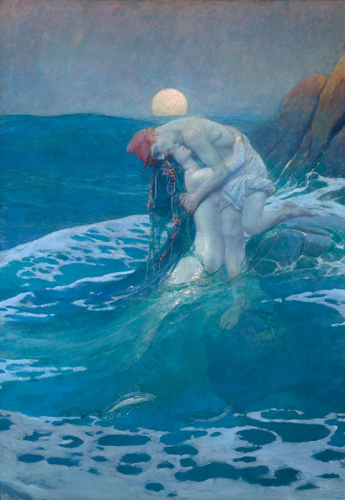
Fig. 13. Howard Pyle, The Mermaid, 1910
At times late in his career Pyle questioned the lasting value of book and magazine illustration. Some of his final pictures, such as The Mermaid and Marooned, were conceived as easel paintings. His voyage to Europe in the last year of his life was largely driven by a desire to develop his mural-painting skills. N.C. Wyeth suffered similar bouts of ambivalence about illustration in his later years. In the end the enduring artistic legacy of both Pyle and Wyeth is rooted in their work for the printed page. “A wider impression can be made upon the world of American Art through book illustration,” Pyle said, “than through any other medium.”[36]
He fondly recalled his first encounters with the art of books: “We—my mother and I—liked the pictures in books the best of all. I may say to you in confidence that even to this very day I still like the pictures you find in books better than wall pictures.”[37] Pyle surely would have been pleased to know that one hundred years after his death, his artwork continues to be appreciated not just by scholars but also by artists, writers, parents, and children, and that his images reach a modern audience whether they are illustrations on the pages of books or “wall pictures” hanging in museums.
RESOURCES
The author gratefully acknowledges the assistance of the following people in the preparation of this essay: Heather Campbell Coyle, Kevin Ferrara, Robert Horvath, Steven Kloepfer, Dennis Nolan, Joyce K. Schiller, Ian Schoenherr, and Gail Stanislow.
[1] Howard Pyle quoted in Frank Schoonover, “Howard Pyle,” in Howard Pyle, The Story of the Champions of the Round Table, The Howard Pyle Brandywine Edition, 1853–1933 (New York: Charles Scribner’s Sons, 1933), pages not numbered.
[2] Ibid.
[3] Schoonover described “mental projection” as Pyle’s “great theory,” and stated that Pyle based all his criticism on it. In Richard K. Doud, "Oral History Interview with Frank Schoonover, April 6, 1966," Archives of American Art, Smithsonian Institution, Washington, D.C. Transcript in Howard Pyle Manuscript Collection, Helen Farr Sloan Library and Archives, Delaware Art Museum, p.6.
[4] Pyle quoted in Ethel Pennewill Brown and Olive Rush, “Notes from Howard Pyle’s Monday Night Lectures, 1904–1906,” August 15, 1904, 32, box 3, folder 2, Howard Pyle Manuscript Collection, Helen Farr Sloan Library and Archives, Delaware Art Museum. After the lectures the two Pyle students wrote down what they recalled and later combined their efforts in what they called their “little red books.” Ibid., 1. Some of these notes are published in Delaware Art Museum, Howard Pyle: Diversity in Depth (Wilmington, DE: Wilmington Society of the Fine Arts, 1973).
[5] Thornton Oakley quoted in Richard Wayne Lykes, “Howard Pyle, Teacher of Illustration,” The Pennsylvania Magazine of History and Biography 80, no. 3 (July 1956): 357, n. 59.
[6] Charles DeFeo, “Personal Reminiscences of Howard Pyle,” in Delaware Art Museum, Howard Pyle: Diversity in Depth (Wilmington, DE: Wilmington Society of the Fine Arts, 1973), 17.
[7] Pyle is quoted as having said: “In doing a composition we often make sketch after sketch without getting what we want when suddenly an unseen force seems to guide the hand and we exclaim, ‘Why, that is what I wanted!’” In Brown and Rush, “Notes from Howard Pyle’s Monday Night Lectures,” August 15, 1904, 37. This mystical orientation is consistent with Pyle’s interest in Swedenborgianism.
[8] Charles J. Andres, “Harvey Dunn Class Notes.” http://www.e-pix.com/ArtMuseum/Dunnclassno.html
[9] Pyle quoted in Brown and Rush, “Notes from Howard Pyle’s Monday Night Lectures,” September 5, 1904, 54.
[10] On the importance of a single idea, see Ibid., June 20, 1904, 2, and July 25, 1904, 18.
[11] Jessie Willcox Smith quoted in Edward D. Nudelman, Jessie Willcox Smith: American Illustrator (Gretna, LA: Pelican Publishing Company, 1990), 23.
[12] Doud, Oral History Interview. Transcript, 10.
[13] Pyle quoted in W. H. D. Koerner, "Notes Taken in Pyle’s Class," Howard Pyle Manuscript Collection, box 3, Helen Farr Sloan Library and Archives, Delaware Art Museum.
[14] Ibid.
[15] DeFeo, “Personal Reminiscences,” 17.
[16] Ibid.
[17] Drexel Institute of Art, Science, and Industry, Catalogue of the Department of Fine and Applied Arts, 1894–95 (Philadelphia, PA: Drexel Institute of Art, Science, and Industry, 1894), 7–8.
[18] DeFeo, “Personal Reminiscences,” 17.
[19] “In the Art Schools,” American Art News 3, no. 72 (March 25, 1905): 2. About the final Marooned painting, Gertrude Brinklé wrote: “This was painted on very hot days, and Mr. John Weller said he had very nearly gotten a sunstroke when he was posing for it. After the painting was finished, Mr. Pyle asked Mr. Schoonover and Mr. Clifford Ashley if the sky looked perhaps a little lonely. Mr. Ashley suggested putting in those birds. Mr. Pyle put them in, painted them out, and then finally put them in again. This marooned is the third painting of this subject—with slight differences.” Notes on Howard Pyle Collection from a conversation between Gertrude Brinklé and Frank Schoonover, February 1949, Howard Pyle Manuscript Collection, box 5, Helen Farr Sloan Library and Archives, Delaware Art Museum.
[20] Andrew Wyeth spoke multiple times about the importance of simplification and elimination in his work. See, for example, “Andy’s World,” Time 82 no. 26 (December 27, 1963): 51. For an in-depth discussion of his practice, see Kathleen A. Foster, “Meaning and Medium in Wyeth’s Art: Revisiting Groundhog Day,” ed. Anne Classen Knutsen, Andrew Wyeth: Memory and Magic (Atlanta, GA: High Museum of Art; Philadelphia: Philadelphia Museum of Art, in association with Rizzoli, New York, 2005), especially 102.
[21] DeFeo, “Personal Reminiscences,” 17.
[22] Several times Pyle criticized figures looking away from the viewer. He said: “It is an axiom in Dramatic Art that the face should always be turned towards the audience and Dramatic Art is nearest akin to our art—As soon as the face is turned away the interest begins to flag. You should see the face with its varied expressions.” Quoted in Brown and Rush, “Notes from Howard Pyle’s Monday Night Lectures,” August 29, 1904, 48.
[23] Brown and Rush, “Notes from Howard Pyle’s Monday Night Lectures,” June 27, 1904, 9.
[24] He instructed his students to do the same. See Brown and Rush, “Notes from Howard Pyle’s Monday Night Lectures,” August 15, 1904, 38.
[25] Richard Wayne Lykes states: “He was always fearful that the artist would lose his sense of proportion in a maze of trifles.” In Lykes, “Howard Pyle, Teacher of Illustration,” 357.
[26] “The human family having worn cloths [sic] for generations, their cloths were a part of them, it was like taking the feathers off a bird before you draw or paint it.” Cornelia Greenough to Richard Wayne Lykes, February 19, 1947, quoted in Lykes, “Howard Pyle, Teacher of Illustration,” 341, n. 6.
[27] Doud, Oral History Interview. Transcript, 10.
[28] Rowland Elzea, A. Haslam, Elizabeth Hawkes, J. McDowell, and Eleanor Pyle Crichton, Tape-Recorded Interview with Pyle Crichton, November 4, 1982, Howard Pyle Manuscript Collection, box 4, Helen Farr Sloan Library and Archives, Delaware Art Museum.
[29] Brown and Rush, “Notes from Howard Pyle’s Monday Night Lectures,” August 22, 1904, 45.
[30] “I would not belittle the necessity of accurate technical training. I insist upon that in my own school even more strenuously,” wrote Pyle to W. M. R. French, April 13, 1905. Quoted in Charles D. Abbott, Howard Pyle: A Chronicle (New York: Harper and Brothers, 1925), 222.
[31] Pyle revealed his thinking about art training in a series of letters to French, who was director of the Art Institute of Chicago, in spring and summer 1905. They are quoted at length in Ibid., 220–27.
[32] Sydney M. Chase, “How Artist Talked in the Composition Class Is Related,” Christian Science Monitor, November 13, 1912, 11.
[33] In his Monday night lectures on composition, Pyle encouraged his students to study the work of, among others, Antoine-Louis Barye, John Everett Millais, and Vasily Vereshchagin. Pyle’s social circle in New York included members of the Society of Illustrators, the Tile Club, and many other arts organizations. See Brandywine River Museum, “Howard Pyle and the American Renaissance,” in Traditional Fine Arts Organization, Resource Library, 2007, “page 1”: http://www.tfaoi.com/aa/7aa/7aa719.htm; “case labels”: http://www.tfaoi.com/aa/7aa/7aa719a.htm; and “label copy”: http://www.tfaoi.com/aa/7aa/7aa719b.htm
[34] Pollice Verso was purchased by department-store magnate Alexander T. Stewart and exhibited publicly in New York. It was in Stewart’s collection in New York by January 1875. Gerald M. Ackerman, “Thomas Eakins and his Parisian Masters Gérôme and Bonnat,” Gazette des Beaux-Arts, series 6, 73 (April 1969): 241–42.
[35] Pyle to French, April 20, 1905. Quoted in Abbott, Howard Pyle: A Chronicle, 224.
[36] Ibid.
[37] Howard Pyle, “When I Was a Little Boy: An Autobiographical Sketch,” Woman’s Home Companion 39, no. 4 (April 1912): 5, 103.


_.JPG)
_.JPG)















